data-animation-override>
“Marcus Hall’s Ford Escort isn’t your usual road-going example, but rather a 10-year-long father-and-son project that’s got a swag of awards in its wake — including King of Tough Street”
We’ve all got different reasons why we chose a particular car for a project. Sometimes you just like the shape, the history, or the factory-fitted engine that may have big potential. It’s not often you stumble across your next project car sitting under a tree at a family friend’s house. Marcus Hall and his father, Graeme, were at a mate’s place a decade ago when they stumbled upon a 1980 Ford Escort MkII which was initially purchased for Graeme’s friend’s daughter.
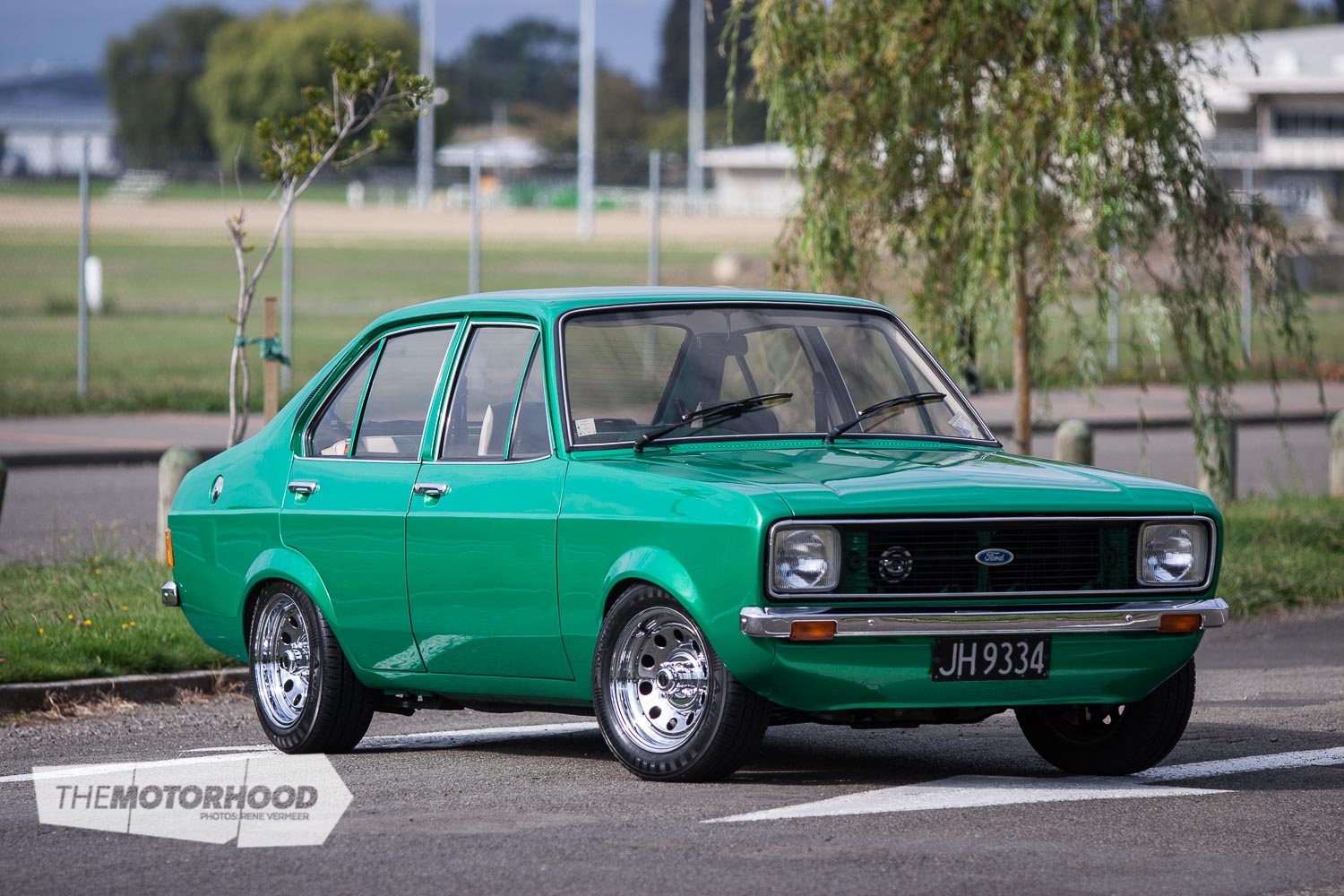
Unfortunately she didn’t show an interest in it, so there it sat, moss-covered and hoping for a fresh start. That evening Marcus went home, and looked through numerous forums and Google images at just what could be done to the Escort to make it look cool. He’d had thoughts of purchasing a DX Corolla, KE30, or something of a similar vintage, but the Escort was just too good a deal to pass on, and hey, variety is the spice of life. After being convinced in no time at all, an offer of $500 was made, and Marcus limped his new-found project home.
Initially the Escort wasn’t to be built for the show circuit, but 2005 was a very influential year for the scene here in New Zealand — with some of the wildest cars ever being built — so naturally that’s where the build started to steer towards.
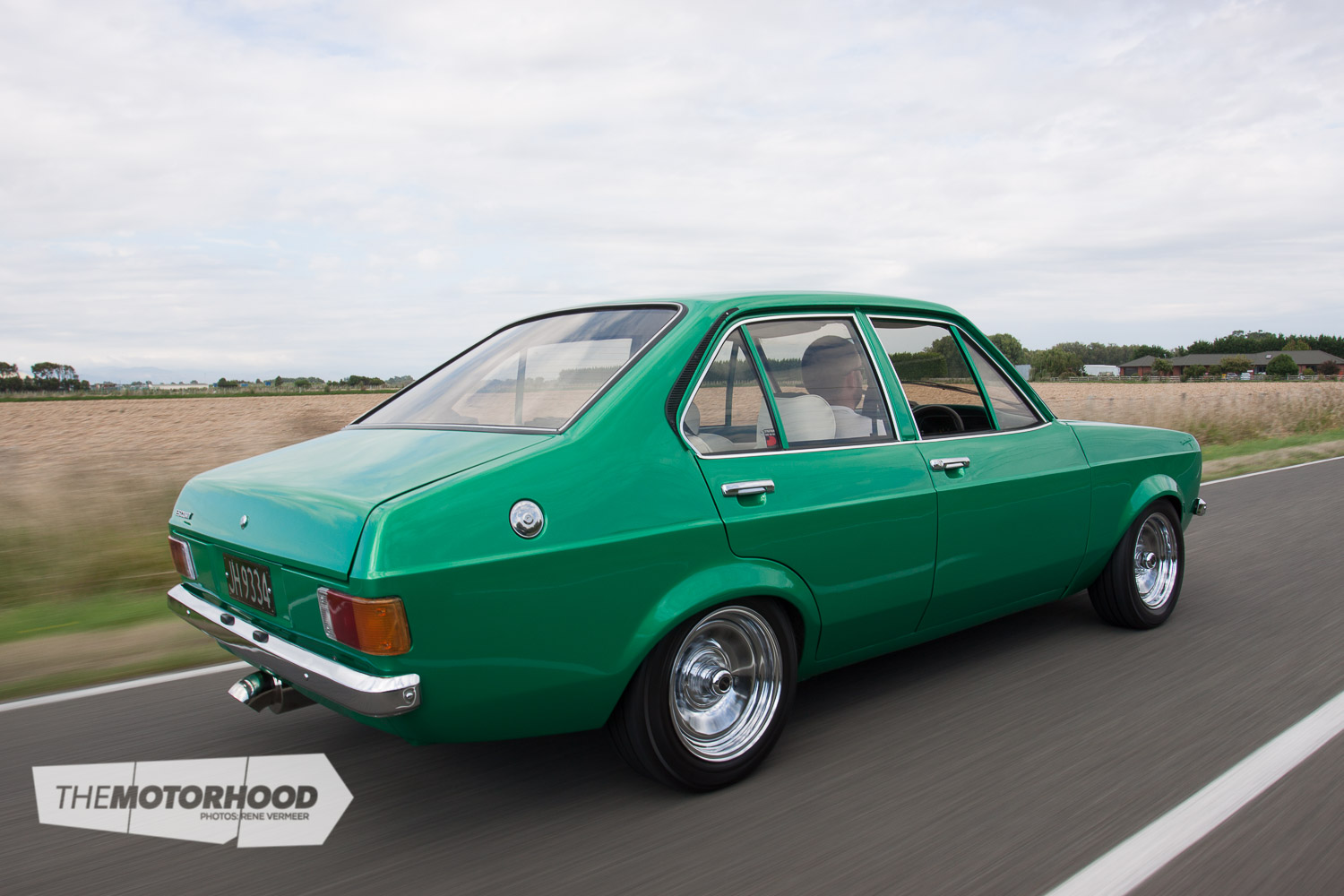
The agreement made by the father-and-son team was that Marcus would take care of the body and interior, and Graeme would look after the running gear, ready for its first 4&Rotary event in Christchurch in 2007.
Marcus was only working part-time during the initial stages of the build, so the Escort body got the much-needed attention it required. With little more than an old spring-tensioned buffing wheel, Marcus prepped the body for paint and painstakingly sanded back several components that could’ve been sand blasted, all to save a bit of coin. After the car was stripped back to a bare shell and panels and sections were welded in from three different rolling bodies, Marcus had the Escort body sent down to Templeton Panel and Paint to have the rust removed and repaired, an automatic transmission tunnel installed, and to get the Escort’s first lick of paint laid on.
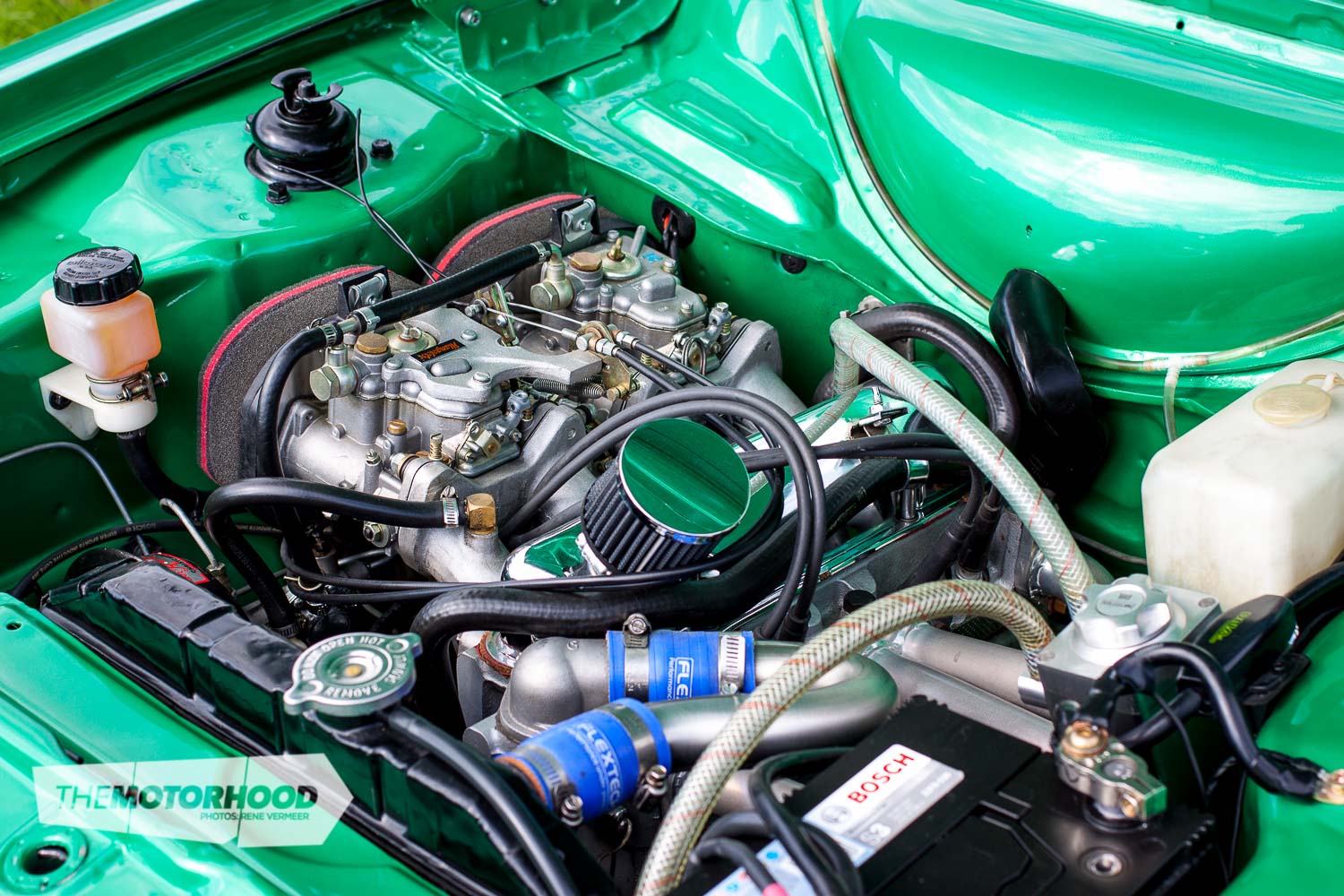
How do you choose a colour for a car that was originally pale yellow? Well, for Marcus, the decision came when he stumbled upon the infamous green hue while building a model car, and it’s stayed the same ever since.
When it came time to repower the Escort, Marcus’ dad had a good look around for a couple of different options. As a friend of theirs worked at a local Mazda wrecker, the idea of throwing in a 13B was tossed around. However, $3500 for just a naturally aspirated engine was deemed too expensive, and they decided to tickle up the more-than-tunable 1600cc crossflow engine. A set of 38mm carbs was installed for a bit more grunt, and the engine ran well for a number of years, but unfortunately five years ago it bit the dust, as Marcus explained. “I was driving down the road one day, and the engine lost all power and died. We decided to pull the head off, and we found out two pistons had melted, among other carnage.” Still wanting to keep it Ford, Marcus sent the engine to be reconditioned once again, but this time with oversized pistons, a Kent head, a custom cam, and twin Weber side-draughts, and while everything was apart most of it was chromed.

The fuel system was also upgraded using a Carter high-pressure electric fuel pump to match the higher-flowing carbs. “My favourite part of the car is definitely the sound of the induction the side-draughts make. The deep throaty noise when you put your foot down, and when the secondaries kick in,” Marcus told us after describing the completed engine.
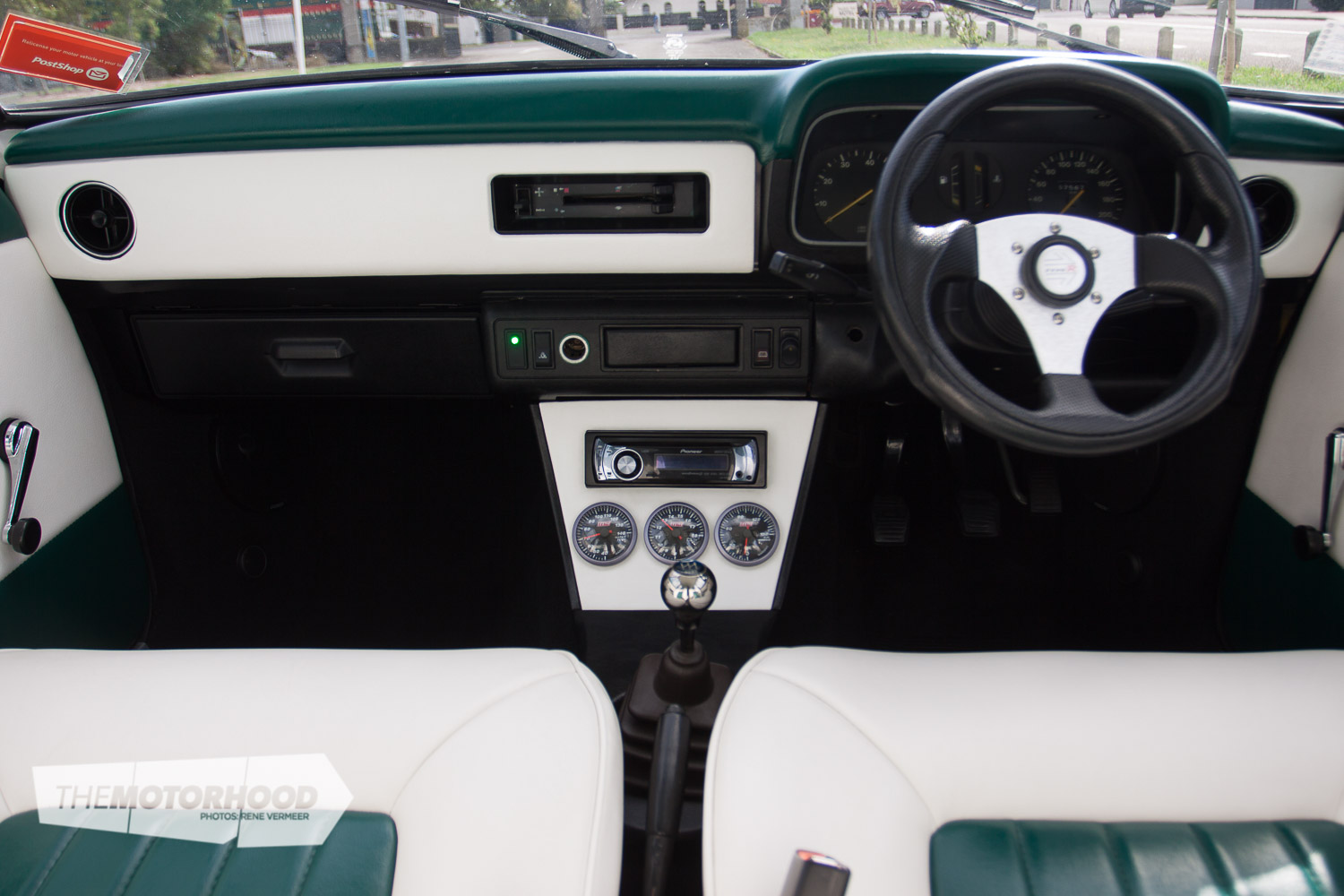
Back in 2007, when Marcus entered his first event, he didn’t have any audio gear, but after seeing the level that everyone else was at, he knew he had to step up his game. Filling the boot entirely was never Marcus’ intention for this part of the build, as he likes to tour around the South Island in the Escort, so it had to be designed in a way that would allow luggage. Two polished Alpine amps were flush mounted into a custom boot tray, and a pair of Fusion CS series 12-inch subwoofers were mounted vertically behind the rear seats.

“With a blanket over the amp, we have no trouble carrying luggage when my partner Sammi and I hit the road to the West Coast,” Marcus explained. Six-point-five-inch Fusion components were installed up front, and amped Fusion 6×9-inch speakers were fitted down the back — a set-up that Marcus enjoys perfecting while sitting in his driveway at home before the next comp.
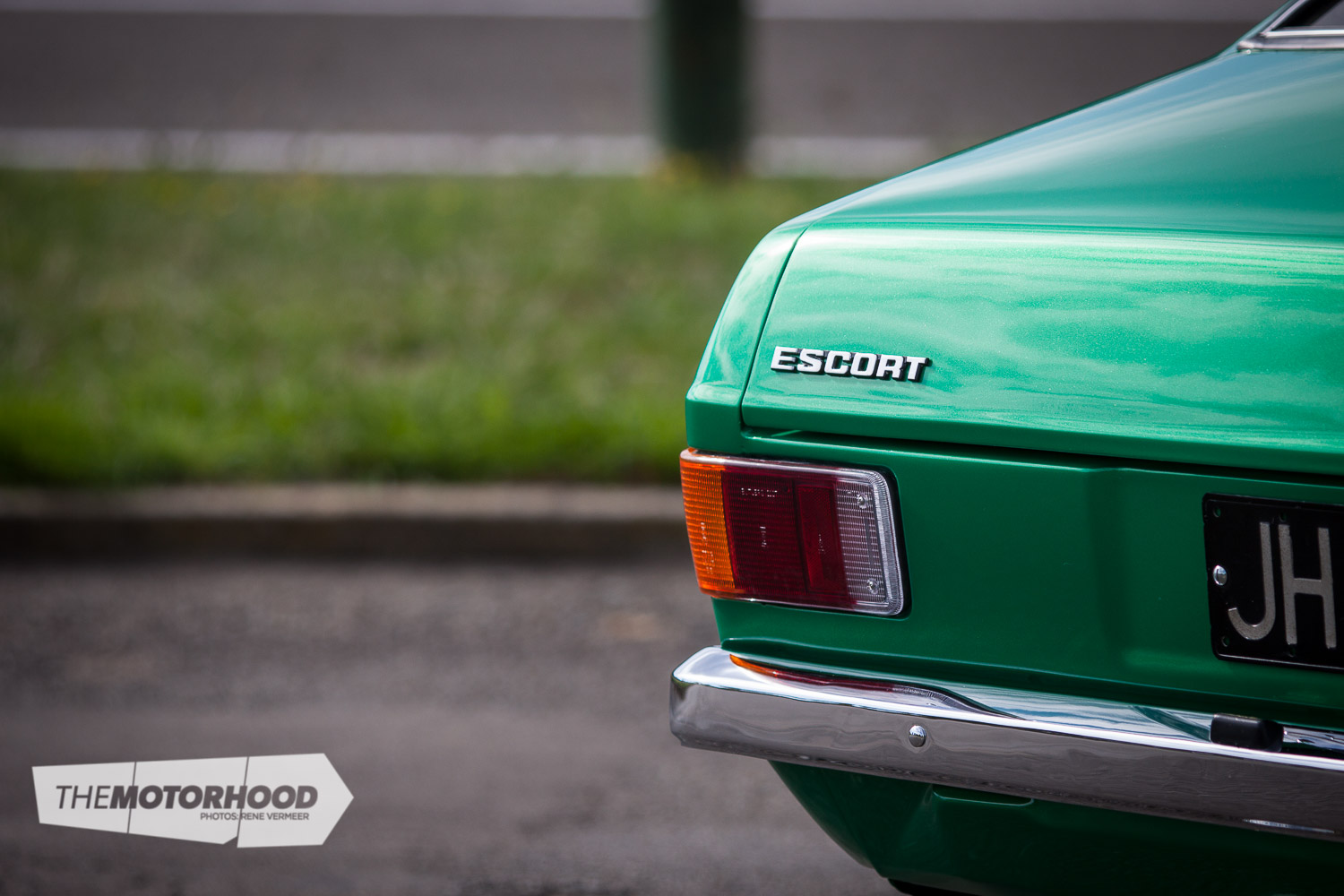
With this well-thought-out sound system, an immaculately detailed engine bay, a world-class interior, and an intensely disciplined commitment to the show scene, Marcus and partner Sammi walked away with top honours at the 2014 4&Rotary Nationals, taking out the tough street category outright.
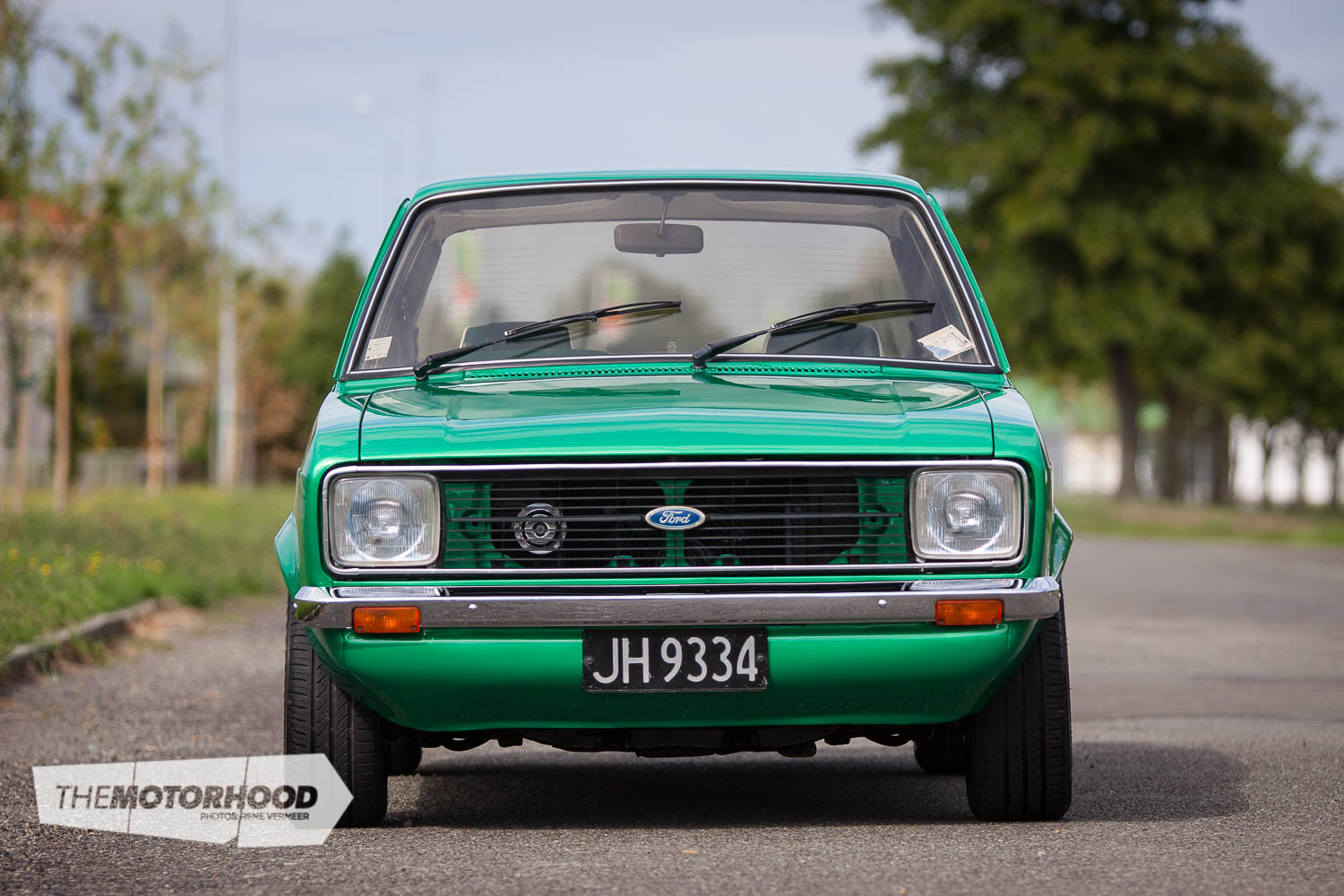
Marcus isn’t phased at all about how long it’s taken to get the Escort to this point, as he told us it was more important to take his time to do things properly. He has another project on the go, which has been off the road for nearly three years, so this is definitely not the last time you’ll see something of this calibre from Marcus grace these pages.
1980 Ford Escort MkII
Engine
- Model: 1600cc, four cylinder
- Block: 1300cc oversized pistons, Kent high-capacity high-pressure oil pump, double-row timing chain
- Block: Kent head, custom cam grind, ported and polished
- Block: Twin 40mm Weber draughts, Pipercross air filters, twin accelerator cables
- Fuel: Carter electric fuel pump, EMPI fuel pressure regulator
- Ignition: Lucas coil, electronic ignition conversion, performance spark plug leads
- Exhaust: Coby headers heat-coated silver, two-inch mild-steel exhaust, two-inch straight-through muffler, Rage dumpy muffler
- Cooling: Modified factory radiator, electric fan
- Other: Oil catch can, Wilwood brake-bias valve, Wilwood brake-fluid reservoir, remote brake-booster set-up, chrome tappet cover, alternator fan, oil breather, sump, and engine pulleys
Driveline
- Gearbox: Ford Sierra five-speed
- Clutch: Heavy duty
- Flywheel: Lightened
- Diff: 3.54:1 diff head
- Other: Custom one-piece driveshaft
Support
- Struts: (F) Monroe shocks (R) shortened Monroe shocks
- Springs: (F) Cobra superlows (R) 51mm (two-inch) lowering blocks
- Brakes: (F) Austin Princess twin-pot calipers, Bendix pads (R) Factory
- Other: SuperPro bushes throughout
Shoes
Wheels: (F) 14×6-inch Cragar Quick Tricks (R) 14×7-inch Cragar Quick Tricks
Tyres: 185/60R14 Yokohama A Drive
Exterior
- Paint: Bare metal respray by Matt Latham
- Enhancements: Wing mirror delete, aerial delete, outside door mouldings deleted, factory chrome trim, rechromed factory bumpers, new window rubbers throughout
- Other: Factory Ghia tinted windows
Interior
- Seats: Factory seats recovered in green-and-white vinyl
- Steering wheel: 300mm Type-R
- Instrumentation: M&H water temp, volt, and oil-pressure gauges
- ICE: Alpine D-class digital mono-block amplifier MRP-M850, Alpine 4/3/2 channel amplifier MRP-F550, twin Fusion CS series 12-inch subwoofers, Pioneer DEH-P4150UB head unit, Fusion PP-CM650 6.5-inch front component speakers, Fusion Powerplant PP-FR6920 6×9-inch rear speakers
- Other: Custom centre console, dash and door cards upholstered with green-and-white vinyl, white roof lining, custom rear parcel tray with Ford logo, door rubbers have been replaced
Performance
POWER: N/A
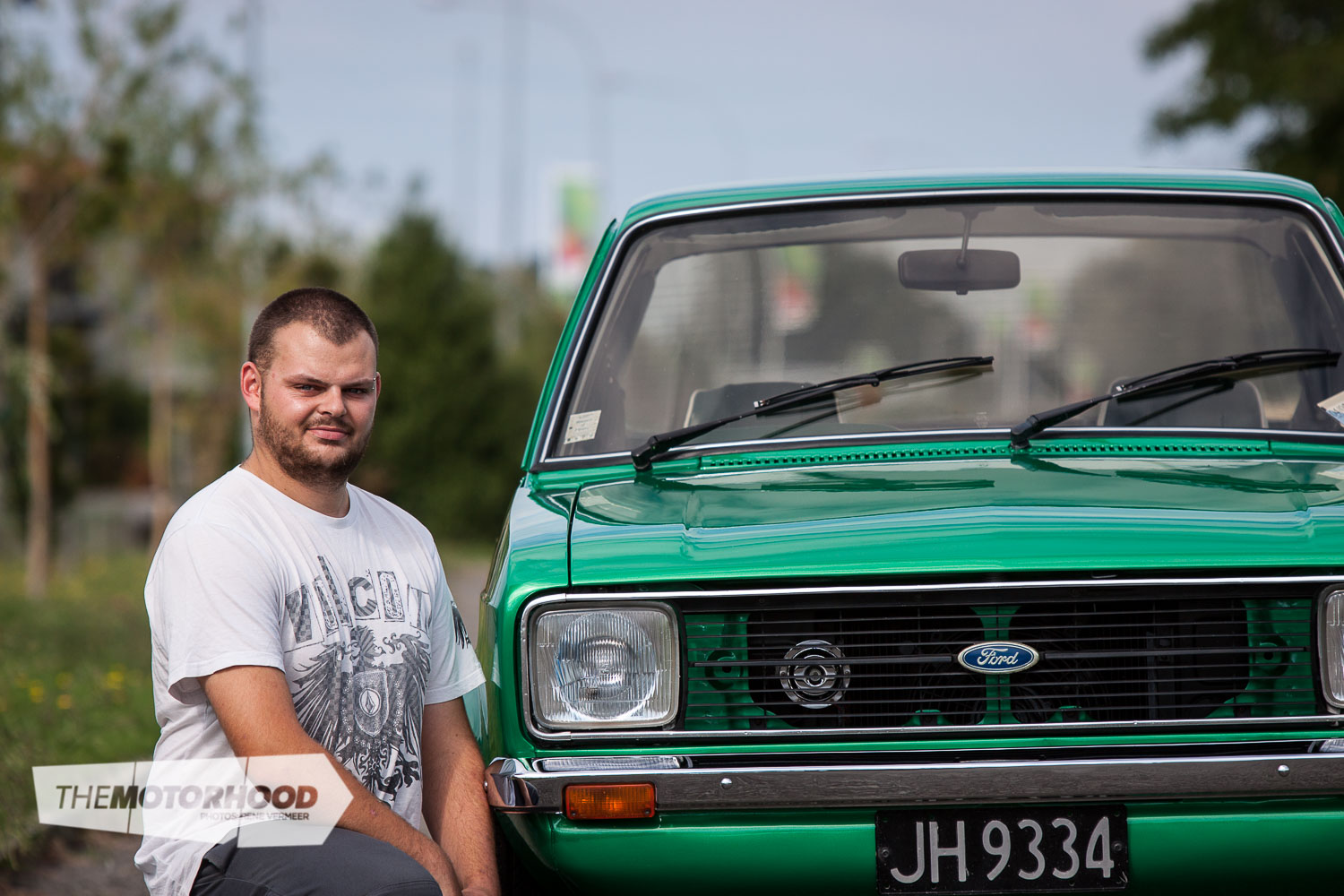
Driver profile
- Driver/owner: Marcus Hall
- Age: 25
- Location: Hornby
- Build time: 10 years
- Length of ownership: 10 years
- Thanks: My lovely partner Sammi Hilton for being the extra pair of hands when I need them and dealing with all the hassles, my parents Jeanette and Graeme for the help over the years, Josh Cattermole and Luke Prattley for the hard work on the audio, Matt Latham for the paint job, Ben Martin for the paint touch-ups, the team at Autobend for giving me time off and helping me out with parts, and to anyone else who has lent a hand over the years.
This article was originally published in NZ Performance Car Issue No. 226. You can pick up a print copy or a digital copy of the magazine below:













